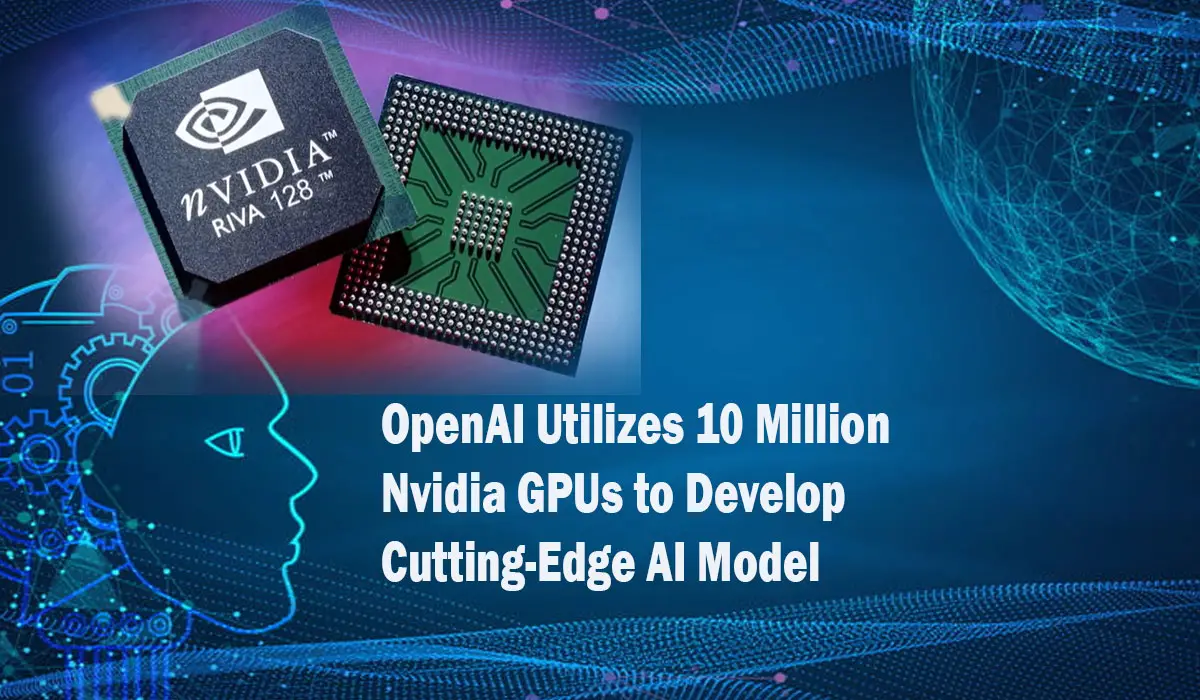In the realm of AI processing, Nvidia’s GPUs reign supreme, and OpenAI stands at the forefront of the race for Artificial General Intelligence. To continue pushing the boundaries of AI capabilities, OpenAI requires even more powerful GPUs that can process information faster and handle larger volumes of data per second. This has led to a groundbreaking collaboration between NVIDIA and OpenAI, wherein they are now considering combining not just thousands, but an astonishing 10 million GPUs.
NVIDIA’s Crucial Support for OpenAI
Reports indicate that NVIDIA has already provided more than 20,000 GPUs to OpenAI. The partnership between the two companies resulted in the development of ChatGPT and the subsequent release of the GPT-4 Model, which relied on thousands of GPUs for its advanced performance. Currently, discussions are underway to create even better AI GPUs that will surpass any existing offerings in terms of capability.
Market Domination and Expanded Accessibility
Both Nvidia and OpenAI have solidified their dominance in the market. OpenAI has taken significant strides by expanding accessibility to its AI models through the web and mobile platforms, including iOS and Android devices. As OpenAI continues to enhance its upcoming AI model, it necessitates a substantial increase in GPU power to incorporate more advanced capabilities. On the other hand, NVIDIA enjoys a staggering 95% market share for AI GPUs used in graphics processors.
To put the scale of this undertaking into perspective, Microsoft requires 20,000 8-GPU servers, amounting to a whopping $4 billion investment, to deploy Bing AI for universal access.
Unleashing the Power of 10 Million GPUs
OpenAI’s ambition lies in creating a next-generation AI model that can perform tasks beyond human capabilities, with current AI models already being 99% more creative than humans. However, achieving this feat demands substantial investment in GPUs and the infrastructure to support 10 million of them for AI processing. Such an endeavor would undoubtedly revolutionize artificial intelligence and open up a plethora of applications and tasks that could be performed either through purchasing or gaining access to cloud providers’ resources.
The upcoming AI model from OpenAI will rely on robust training techniques, enabling it to connect and leverage more than 10 million AI GPUs simultaneously. While some may view this as overkill, OpenAI’s dominance in the industry necessitates such power to process vast amounts of data, often reaching multiple terabytes. Such processing capabilities are essential for tasks like pattern recognition, text generation, predictions, and object identification.
Read Also: Best Prompts for Generating Beautiful AI Girl
Challenges and Collaborations
Considering NVIDIA’s capacity to produce a million AI GPUs, delivering millions of GPUs would likely take a decade, considering the current demand and GPU shortages in the industry. Nevertheless, NVIDIA has taken measures to collaborate with TSMC to ramp up GPU production and supply. These endeavors will not only impact the pricing and performance of the GPUs but also pose challenges in effectively interconnecting such a massive number of GPUs.
Demand and Market Trends
Other tech giants, including Google, Microsoft, and Amazon, have also ventured into AGI development, leading them to order thousands of GPUs from NVIDIA. The increased demand has significantly boosted NVIDIA’s stock value, turning the company into a trillion-dollar enterprise. In the last year, NVIDIA impressively sold more than 30.34 million GPUs, with around 10 million GPUs sold at the retail level.
While OpenAI’s ambition to deploy 10 million GPUs seems grand, the cost factor remains a significant consideration. Additionally, the possibility of facing another GPU shortage similar to the pandemic period is unlikely. Companies like Microsoft are also actively working on GPU development for AI, which may help alleviate some of the costs associated with acquiring such high-powered GPUs.
The Role of Specialized GPUs
Notably, Stability AI and Meta AI are utilizing specialized Nvidia A100 GPUs for their AI models. Stability AI has incorporated 5,400 Nvidia A100 GPUs for image generation, while Meta AI employs approximately 2,048 Nvidia A100 GPUs to train its 1.4T LLAMA Model. These specially designed GPUs are capable of handling complex calculations concurrently and are instrumental in training and using neural network models.
The Evolution of GPUs
The application of GPUs has come a long way, transitioning from their initial use in graphics processing to their focus on machine learning tasks during the advent of AGI. While NVIDIA currently holds the lead in GPU development, other companies like AMD and Intel are also actively engaged in research and development to build AGI models. Training on GPUs other than NVIDIA’s offerings is also feasible and worth exploring.
As NVIDIA continues to advance, the company will refine its frameworks and libraries to maintain profitability while ensuring affordable pricing for developers.
In conclusion, OpenAI’s pursuit of utilizing 10 million Nvidia GPUs marks a groundbreaking step towards realizing a more advanced and capable AI model. The collaboration between NVIDIA and OpenAI is set to reshape the landscape of artificial intelligence, opening up new possibilities and opportunities for technological advancement. As the AI industry propels forward, the potential impact of this collaboration cannot be underestimated.

